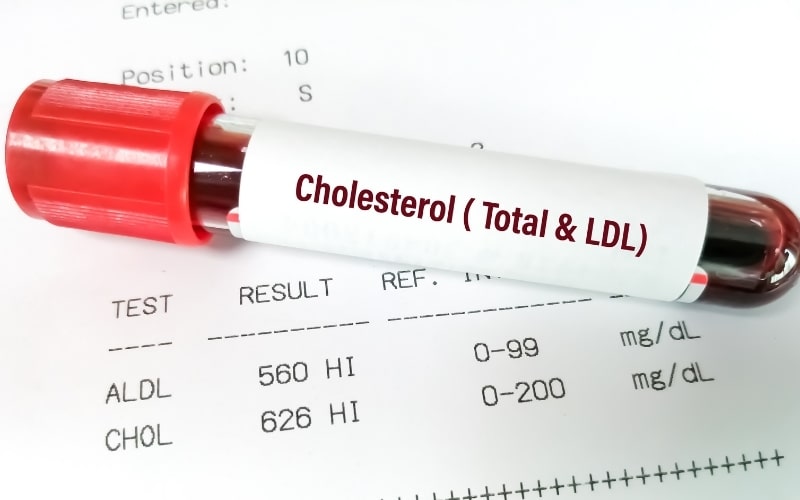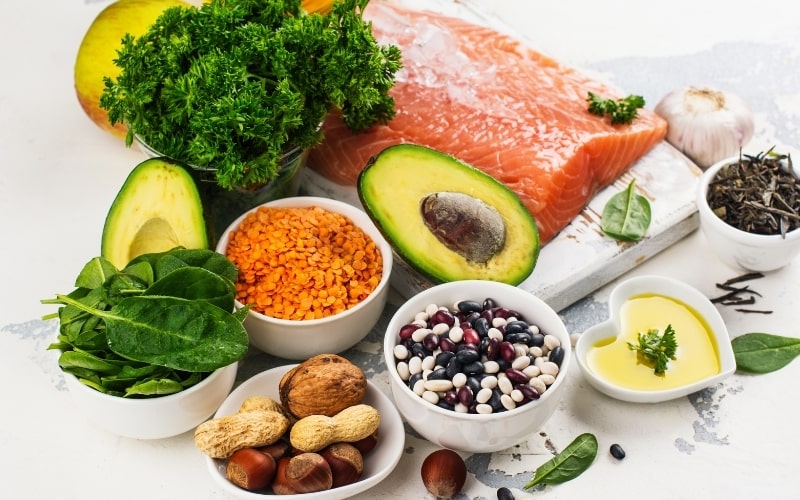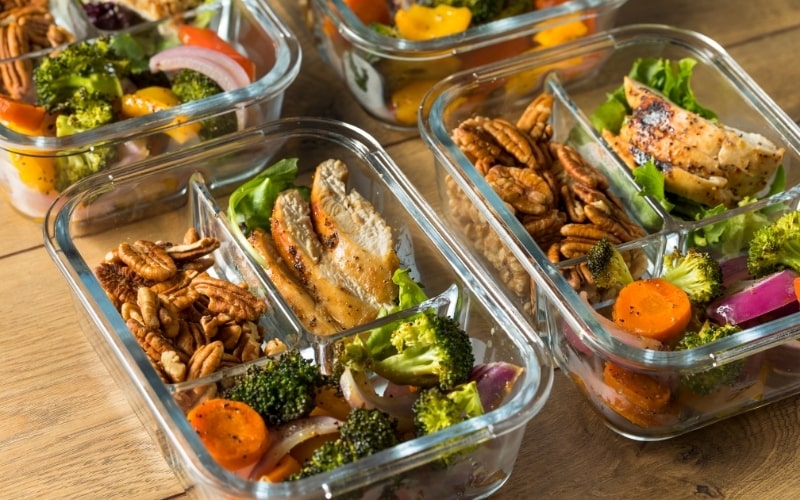*This post may contain affiliate links. I may earn a small commission—at no extra cost to you. For more information, please see our disclaimer.
Did you know that nearly 40% of adults worldwide have elevated cholesterol levels, putting them at increased risk for heart disease? The good news is that dietary changes can reduce LDL (bad) cholesterol by up to 30% in just a few weeks! This comprehensive 7-day low cholesterol diet meal plan provides everything needed to start this heart-healthy journey.
Managing cholesterol doesn’t mean sacrificing flavor or satisfaction. This carefully crafted meal plan combines scientifically-proven cholesterol-lowering foods with delicious, easy-to-prepare recipes that the whole family will enjoy. Each day includes balanced meals designed to reduce harmful cholesterol while supporting overall cardiovascular health.
Understanding Cholesterol
What Makes Cholesterol Dangerous?
Cholesterol travels through the bloodstream in two main forms:
- LDL (Low-Density Lipoprotein): Often called “bad” cholesterol, LDL can build up in artery walls
- HDL (High-Density Lipoprotein): Known as “good” cholesterol, HDL helps remove LDL from arteries
Foods That Fight Cholesterol
The most effective cholesterol-lowering foods contain:
- Soluble Fiber: Binds to cholesterol in the digestive system
- Plant Sterols: Naturally occurring compounds that block cholesterol absorption
- Omega-3 Fatty Acids: Reduce inflammation and support heart health
- Antioxidants: Protect against oxidative damage to blood vessels

🌟 Unlock Ancient SuperFood Secrets for Optimal Heart Health 🌟
Day 1: Starting Strong with Fiber-Rich Foundations
Breakfast: Overnight Oats with Berries and Nuts
Preparation Time: 5 minutes (night before)
Ingredients:
- 1/2 cup rolled oats
- 1/2 cup unsweetened almond milk
- 1 tablespoon chia seeds
- 1/2 cup mixed berries
- 1 tablespoon chopped walnuts
- 1 teaspoon honey
Benefits: This powerhouse breakfast delivers 8 grams of soluble fiber and heart-healthy omega-3s from chia seeds and walnuts.
Lunch: Mediterranean Chickpea Salad
Preparation Time: 15 minutes
Ingredients:
- 1 cup cooked chickpeas
- 1/2 cucumber, diced
- 1/4 red onion, minced
- 1/4 cup cherry tomatoes, halved
- 2 tablespoons olive oil
- 1 tablespoon lemon juice
- Fresh herbs (parsley, mint)
Benefits: Chickpeas provide plant protein and soluble fiber, while olive oil offers monounsaturated fats that help raise HDL cholesterol.
Dinner: Baked Salmon with Roasted Vegetables
Preparation Time: 25 minutes
Ingredients:
- 4 oz salmon fillet
- 1 cup broccoli florets
- 1/2 red bell pepper, sliced
- 1/2 zucchini, sliced
- 1 tablespoon olive oil
- Herbs and spices (garlic, rosemary, black pepper)
Benefits: Salmon provides omega-3 fatty acids that reduce inflammation and support healthy cholesterol levels.
Day 2: Plant-Powered Cholesterol Defense
Breakfast: Green Smoothie Bowl
Ingredients:
- 1 cup spinach
- 1/2 avocado
- 1/2 banana
- 1/2 cup unsweetened almond milk
- 1 tablespoon ground flaxseed
- Toppings: sliced almonds, blueberries
Lunch: Lentil and Vegetable Soup
Ingredients:
- 1/2 cup red lentils
- 1 cup vegetable broth
- 1/2 cup diced carrots
- 1/2 cup celery
- 1/4 onion, diced
- Spices: turmeric, cumin, black pepper
Dinner: Quinoa Stuffed Bell Peppers
Ingredients:
- 2 bell peppers, tops cut and seeds removed
- 1/2 cup cooked quinoa
- 1/4 cup black beans
- 1/4 cup corn
- 1/4 cup diced tomatoes
- 2 tablespoons nutritional yeast
🌟 Transform Your Kitchen with Time-Tested SuperFood Recipes 🌟
Day 3: Heart-Healthy Grains and Lean Proteins
Breakfast: Steel-Cut Oatmeal with Apple and Cinnamon
Ingredients:
- 1/2 cup steel-cut oats
- 1 cup water
- 1/2 apple, diced
- 1 teaspoon cinnamon
- 1 tablespoon chopped pecans
- 1 teaspoon maple syrup
Lunch: Turkey and Avocado Wrap
Ingredients:
- 1 whole wheat tortilla
- 3 oz lean turkey breast
- 1/4 avocado, sliced
- 1/4 cup shredded lettuce
- 1/4 cup diced tomatoes
- 1 tablespoon hummus
Dinner: Grilled Chicken with Sweet Potato and Green Beans
Ingredients:
- 4 oz grilled chicken breast
- 1 medium roasted sweet potato
- 1 cup steamed green beans
- 1 tablespoon olive oil
- Seasonings: garlic powder, paprika, thyme
Day 4: Antioxidant-Rich Mediterranean Flavors
Breakfast: Greek Yogurt Parfait
Ingredients:
- 3/4 cup plain Greek yogurt (low-fat)
- 1/2 cup mixed berries
- 2 tablespoons chopped walnuts
- 1 tablespoon ground flaxseed
- 1 teaspoon honey
Lunch: Mediterranean Quinoa Bowl
Ingredients:
- 1/2 cup cooked quinoa
- 1/4 cup hummus
- 1/4 cup diced cucumber
- 1/4 cup cherry tomatoes
- 2 tablespoons olives
- 1 tablespoon feta cheese (low-fat)
- 1 tablespoon olive oil
- Lemon juice and herbs
Dinner: Herb-Crusted White Fish with Asparagus
Ingredients:
- 4 oz white fish (cod or halibut)
- 1 cup asparagus spears
- 1 tablespoon olive oil
- Fresh herbs: dill, parsley, lemon zest
- 1/2 cup brown rice
🌟 Master Ancient Healing Foods for Modern Wellness 🌟
Day 5: Fiber-Forward Plant-Based Focus
Breakfast: Chia Seed Pudding
Ingredients:
- 3 tablespoons chia seeds
- 3/4 cup unsweetened coconut milk
- 1/2 banana, sliced
- 1 tablespoon almond butter
- 1 teaspoon vanilla extract
- Cinnamon to taste
Lunch: Black Bean and Vegetable Burrito Bowl
Ingredients:
- 1/2 cup black beans
- 1/2 cup brown rice
- 1/4 avocado, diced
- 1/4 cup corn
- 1/4 cup diced bell peppers
- 2 tablespoons salsa
- 1 tablespoon lime juice
- Fresh cilantro
Dinner: Vegetable Stir-Fry with Tofu
Ingredients:
- 3 oz firm tofu, cubed
- 1 cup mixed vegetables (broccoli, carrots, snap peas)
- 1 tablespoon sesame oil
- 2 tablespoons low-sodium soy sauce
- 1 clove garlic, minced
- 1 teaspoon fresh ginger
- 1/2 cup brown rice
Day 6: Omega-3 Rich Seafood Selections
Breakfast: Whole Grain Toast with Avocado
Ingredients:
- 2 slices whole grain bread
- 1/2 avocado, mashed
- 1/4 cup cherry tomatoes, halved
- 1 tablespoon hemp seeds
- Squeeze of lemon
- Black pepper and sea salt
Lunch: Sardine and White Bean Salad
Ingredients:
- 1 can sardines in water (drained)
- 1/2 cup white beans
- 2 cups mixed greens
- 1/4 red onion, thinly sliced
- 2 tablespoons olive oil
- 1 tablespoon balsamic vinegar
- Fresh herbs
Dinner: Mackerel with Roasted Root Vegetables
Ingredients:
- 4 oz mackerel fillet
- 1/2 cup cubed sweet potato
- 1/2 cup Brussels sprouts, halved
- 1/2 cup carrots, sliced
- 1 tablespoon olive oil
- Rosemary and thyme
🌟 Explore Forgotten SuperFoods That Support Heart Health 🌟
Day 7: Celebration of Cholesterol-Fighting Foods
Breakfast: Vegetable Omelet with Herbs
Ingredients:
- 2 egg whites + 1 whole egg
- 1/4 cup spinach
- 1/4 cup mushrooms, sliced
- 2 tablespoons bell peppers, diced
- 1 tablespoon olive oil
- Fresh herbs (chives, parsley)
- 1 slice whole grain toast
Lunch: Rainbow Salad with Grilled Chicken
Ingredients:
- 3 oz grilled chicken breast
- 2 cups mixed greens
- 1/4 cup shredded carrots
- 1/4 cup red cabbage, sliced
- 1/4 cup chickpeas
- 1/4 avocado, sliced
- 2 tablespoons olive oil
- 1 tablespoon apple cider vinegar
Dinner: Vegetarian Chili with Cornbread
Ingredients:
- 1/2 cup mixed beans (kidney, black, pinto)
- 1/4 cup diced tomatoes
- 1/4 cup bell peppers
- 1/4 cup onions
- Spices: chili powder, cumin, paprika
- 1 small piece whole grain cornbread
Essential Shopping List for Success
Proteins:
- Wild-caught salmon and sardines
- Lean poultry (chicken breast, turkey)
- Plant-based proteins (lentils, chickpeas, black beans)
- Tofu and tempeh
- Egg whites
Whole Grains:
- Steel-cut oats and rolled oats
- Quinoa and brown rice
- Whole wheat bread and tortillas
- Barley and bulgur wheat
Healthy Fats:
- Extra virgin olive oil
- Avocados
- Raw nuts (walnuts, almonds, pecans)
- Seeds (chia, flax, hemp)
Cholesterol-Fighting Vegetables:
- Leafy greens (spinach, kale, arugula)
- Cruciferous vegetables (broccoli, Brussels sprouts)
- Colorful bell peppers
- Sweet potatoes and carrots

🌟 Discover Ancient SuperFoods That Naturally Lower Cholesterol 🌟
Meal Prep Strategies for Busy Lifestyles
Weekend Preparation Tips:
- Batch cook grains: Prepare large portions of quinoa, brown rice, and oats
- Wash and chop vegetables: Pre-cut bell peppers, carrots, and celery for easy access
- Prepare protein portions: Cook chicken breasts, hard-boil eggs, and cook beans in bulk
- Make overnight oats: Prepare 3-4 servings for quick weekday breakfasts
Storage Solutions:
- Use glass containers to maintain freshness
- Portion proteins into 3-4 oz servings
- Store cut vegetables in airtight containers with paper towels to absorb moisture
- Freeze extra portions of soups and chilis for future weeks
Time-Saving Cooking Methods:
- One-pan meals: Combine proteins and vegetables on sheet pans
- Slow cooker magic: Set up meals before work for ready-to-eat dinners
- Pressure cooking: Reduce cooking time for beans, grains, and tough vegetables

Scientific Evidence Behind Cholesterol-Lowering Foods
The Power of Soluble Fiber
Research published in the American Journal of Clinical Nutrition demonstrates that consuming 10-25 grams of soluble fiber daily can reduce LDL cholesterol by 5-10%. This meal plan provides approximately 15-20 grams of soluble fiber daily through:
- Oats and barley: Contain beta-glucan, a particularly effective type of soluble fiber
- Beans and legumes: Provide both protein and cholesterol-lowering fiber
- Fruits and vegetables: Offer pectin and other beneficial fiber types
Omega-3 Fatty Acids and Heart Health
Studies show that consuming omega-3 rich fish twice weekly can:
- Reduce triglycerides by up to 30%
- Increase HDL (good) cholesterol levels
- Decrease inflammation in blood vessels
- Lower blood pressure naturally
Plant Sterols: Nature’s Cholesterol Blockers
Foods naturally containing plant sterols can reduce cholesterol absorption by up to 15%. This meal plan incorporates sterol-rich foods including:
- Nuts and seeds
- Vegetable oils (especially olive oil)
- Whole grains
- Legumes
🌟 Learn About Powerful SuperFoods That Support Cardiovascular Wellness 🌟
Customizing the Plan for Individual Needs
For Vegetarians and Vegans:
- Replace fish with plant-based omega-3 sources like flaxseeds, chia seeds, and walnuts
- Substitute tofu, tempeh, or legumes for animal proteins
- Ensure adequate B12 and iron intake through fortified foods or supplements
- Include hemp seeds and algae-based omega-3 supplements
For Those with Diabetes:
- Monitor portion sizes of grains and fruits
- Pair carbohydrates with protein or healthy fats
- Choose low-glycemic options like steel-cut oats over instant varieties
- Include more non-starchy vegetables in each meal
For Gluten-Free Requirements:
- Replace wheat-based products with quinoa, rice, or certified gluten-free oats
- Check labels on processed foods for hidden gluten
- Use naturally gluten-free grains like millet and buckwheat
- Ensure adequate fiber intake through fruits, vegetables, and gluten-free whole grains
Hydration and Beverage Choices
Best Beverages for Cholesterol Management:
- Green tea: Contains catechins that may help lower LDL cholesterol
- Water with lemon: Supports liver function and aids in cholesterol metabolism
- Herbal teas: Hibiscus tea has been shown to reduce blood pressure
- Unsweetened plant milks: Fortified varieties provide essential nutrients
Beverages to Limit:
- Sugary drinks and sodas
- Excessive alcohol (limit to one drink per day for women, two for men)
- High-fat dairy products
- Energy drinks with added sugars
Exercise Integration for Maximum Benefits
Cardiovascular Activities:
Regular aerobic exercise can raise HDL cholesterol by 5-10% while lowering LDL cholesterol. Effective activities include:
- Brisk walking: 30 minutes daily
- Swimming: Low-impact, full-body workout
- Cycling: Indoor or outdoor options
- Dancing: Fun way to increase heart rate
Strength Training Benefits:
Resistance exercise supports cholesterol management by:
- Improving insulin sensitivity
- Increasing muscle mass, which boosts metabolism
- Supporting healthy weight maintenance
- Enhancing overall cardiovascular function
🌟 Discover Ancient Wisdom for Modern Heart Health Challenges 🌟
Tracking Progress and Monitoring Results
Key Metrics to Monitor:
- Total cholesterol levels: Aim for less than 200 mg/dL
- LDL cholesterol: Target less than 100 mg/dL (or less than 70 mg/dL for high-risk individuals)
- HDL cholesterol: Strive for 40 mg/dL or higher for men, 50 mg/dL or higher for women
- Triglycerides: Maintain levels below 150 mg/dL
Timeline for Results:
- 2-4 weeks: Initial improvements in energy and digestion
- 6-8 weeks: Measurable changes in cholesterol levels
- 3-6 months: Significant improvements in overall cardiovascular markers
- 1 year: Established long-term heart-healthy habits
Working with Healthcare Providers:
Regular monitoring ensures the diet plan effectiveness and safety. Schedule follow-up appointments to:
- Review cholesterol panel results
- Adjust medications if necessary
- Discuss any concerns or challenges
- Celebrate progress and set new goals
Common Challenges and Practical Solutions
Limited Cooking Time
Solutions:
- Invest in time-saving appliances (slow cooker, pressure cooker)
- Prepare ingredients in advance during less busy periods
- Keep healthy frozen options available for emergencies
- Master 15-minute meal techniques
Family Members with Different Dietary Needs
Solutions:
- Base meals on cholesterol-friendly foundations, then add components for others
- Involve family members in meal planning and preparation
- Gradually introduce new foods to expand everyone’s palate
- Focus on naturally delicious, wholesome foods everyone can enjoy
Dining Out and Social Events
Solutions:
- Research restaurant menus in advance
- Look for grilled, baked, or steamed preparation methods
- Request dressings and sauces on the side
- Focus on vegetable-based dishes and lean proteins
- Don’t hesitate to ask about ingredient modifications
Budget-Friendly Tips for Heart-Healthy Eating
Cost-Effective Protein Sources:
- Dried beans and lentils: Extremely affordable and versatile
- Canned fish: Sardines and salmon provide omega-3s at lower cost than fresh
- Eggs: Complete protein source that’s budget-friendly
- Seasonal fish: Purchase when on sale and freeze for later use
Maximizing Vegetable Value:
- Frozen vegetables: Often more affordable than fresh, with similar nutritional value
- Seasonal shopping: Purchase produce when it’s abundant and less expensive
- Community gardens: Consider growing herbs and simple vegetables
- Bulk purchasing: Buy non-perishables in larger quantities for savings
🌟 Access Traditional SuperFood Knowledge for Budget-Conscious Health 🌟
Long-Term Success Strategies
Building Sustainable Habits:
- Start gradually: Implement one or two changes per week rather than overhauling everything at once
- Focus on addition, not restriction: Add cholesterol-fighting foods before eliminating favorites
- Plan for setbacks: Understand that progress isn’t always linear
- Celebrate small victories: Acknowledge improvements in energy, sleep, and overall well-being
Creating a Support System:
- Family involvement: Encourage household members to participate in meal planning
- Professional guidance: Work with registered dietitians for personalized advice
- Community connections: Join online forums or local groups focused on heart health
- Regular check-ins: Schedule consistent follow-ups with healthcare providers
Adapting the Plan Over Time:
As cholesterol levels improve and habits become established, the meal plan can evolve to include:
- Greater variety in protein sources
- Seasonal ingredient rotations
- Cultural cuisine adaptations
- Advanced cooking techniques and flavor profiles
Conclusion
This 7-day low cholesterol diet meal plan provides the foundation for long-term cardiovascular health through delicious, nutritious food choices. The combination of soluble fiber, omega-3 fatty acids, plant sterols, and antioxidants creates a powerful defense against elevated cholesterol levels.
Success comes from consistency rather than perfection. Small, sustainable changes compound over time to create significant health improvements. This meal plan serves as a starting point for developing personalized eating patterns that support both cholesterol management and overall well-being.
Remember that dietary changes work best when combined with regular physical activity, stress management, and adequate sleep. These lifestyle factors work synergistically to support optimal cholesterol levels and cardiovascular health.
Take the first step today by incorporating just one or two elements from this meal plan. Whether it’s starting the morning with cholesterol-fighting oatmeal or adding more omega-3 rich fish to the weekly routine, every positive change moves toward better heart health.
